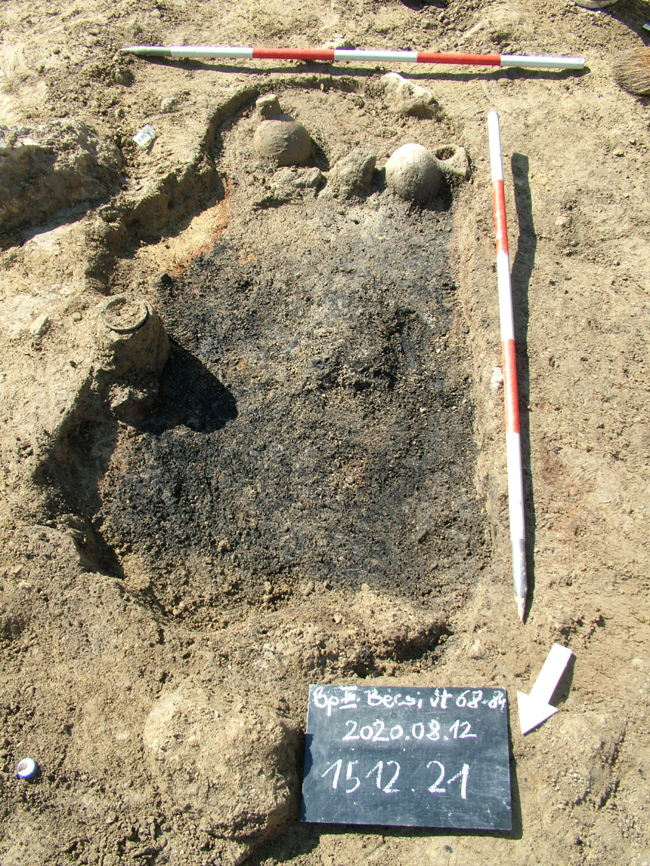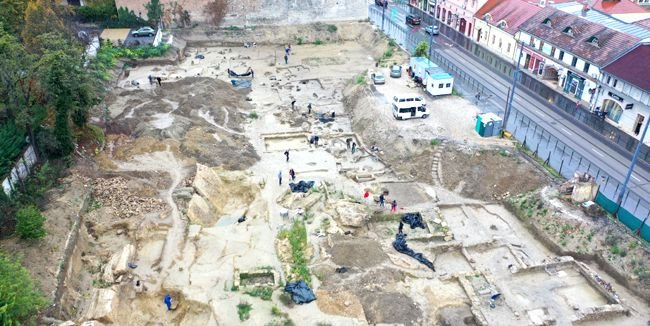The archaeological excavations underway on the plot under 68–84 Bécsi Road are significant because they allow for the continuous study of a large portion of the cemetery of the military encampment, Aquincum" – writes the Archeology subpage of the Budapest History Museum, regeszet.aquincum.hu.
The path taken by Bécsi Road in the 3rd District was a road in Roman times as well. The area to the west of it was used as a burial site between the end of the 1st century and the middle of the 4th. Over one-hundred-thousand people were buried on the site. The dead were either cremated or buried.
Many objects have been found during the excavation of the graves. The most common finds were ceramic jars, glasses, plates with the remains of drink and food, ceramic lamps – an indispensable tool even in the afterlife – and coins for Kharon, the ferryman of the underworld. Bird-shaped rattles were found among the items buried with those cremated – possibly in the case of child burials – alongside glass jars for perfumes.

Various ceramic and glass items are among the most common finds in the excavation of the cemetery of Aquincum
(Photo: regeszet.aquincum.hu)
Golden earrings and rings were also found, as were a large number of glass orbs of various sizes. The so-called fibula, clothespins made of bronze wires were common in Roman clothing, and several of these were also found.
The curse-tablets are some of the most interesting finds, as they showcase the religiosity of ancient everyday people. Such tablets were often engraved by magi onto small lead plates. After being written, they would be folded and placed into shrines of the graves of the newly deceased.
Hopefully, studies of such a large number of archaeological items will provide additional insights into the life of those who lived here in ancient times.
Read the full article in Hungarian here.
Source: regeszet.aquincum.hu
Cover photo: Exciting finds in the cemetery of the Roman military encampment (Photo: regeszet.aquincum.hu)








Hozzászólások
Log in or register to comment!
Login Registration